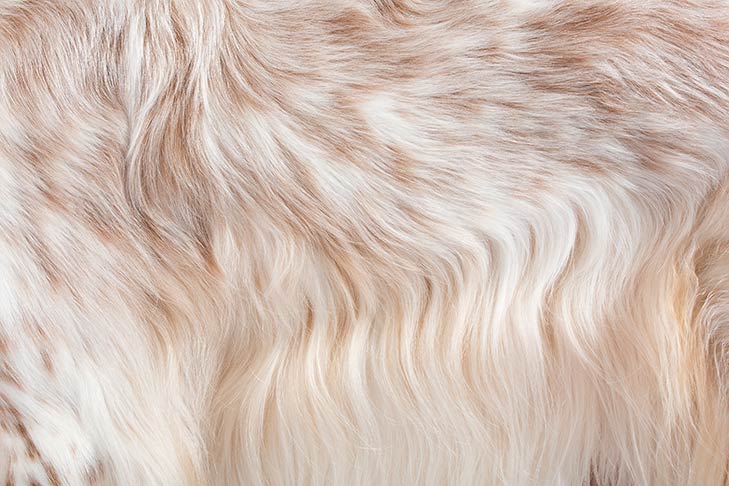Should Hair and Fur Be Treated Differently?
Fur-type coats need to be specially nourished. Bishop-Jenkins says, “Fur-type coats have a lot more hairs in each follicle—and many more follicles. Short fur tends to turn over: that is, shed and regrow more often compared to longer hair. That means fur coats should be nourished with conditioners that contain minerals (the building blocks of coat growth).
“Long hair may stay on the dog for months or even years,” Bishop-Jenkins continues. “It needs protection from drying out and breaking, so it needs moisturizers to keep the longer hair ends hydrated and healthy.”
Do Dogs Have Hair or Fur?
Hair and fur are practical terms to refer to different genetic programs for different types of dog coats. On the cellular level, all canine coats, whether hair or fur, are made of keratin. Practically, however, there’s a huge difference.
The difference lies in how the coat grows. Some coats are genetically programmed to grow to a predetermined length (or PDL). This means they will grow to a certain length, at which point they will stop. Other coats grow to an undetermined length (or UDL), meaning they will keep growing until they are cut or until they break. Dogs with fur have coats that grow to a predetermined length and then stop growing. Dogs with hair will have coats that grow for much longer—sometimes even for years.

Dogs often have another kind of coat, variously referred to as undercoat, wool, or secondary hairs. If a dog has both an undercoat and an outercoat (also called guard or primary hairs), they are said to be double-coated. In fact, most dogs are double-coated. The undercoat and outercoat differ in structure.
The outercoat has three fully-formed layers (cuticle, cortex, and medulla), while the undercoat may only have a cuticle and cortex. The outercoat’s hairs are longer and stronger than those in the undercoat. The weaker undercoat hairs grow in and fall out many times a year, often seasonally. Outercoat hairs grow very slowly; there can be long periods during which they may not grow at all.
Despite the seemingly vast array of canine coat types, almost all are explained by the interaction of just three gene variants. The genes controlling the coat growth cycle are responsible for the length of hair: and whether we call what covers our pets either hair or fur.
All outercoats go through three phases of the growth cycle: anagen, catagen, and telogen. The anagen phase is the period of growth that determines coat length. During the catagen phase, the hairs stop growing and the hair follicle shrinks. Telogen is the resting phase; here, the hair basically just stays in the follicle, although the root is detached. Some veterinary dermatologists add a fourth phase (exogen) to describe the period when the hair is shed.
According to Bishop-Jenkins, the longest telogen (or resting) phase occurs in dogs with medium-length fur coats, much like wild wolves. This is why these types of coats do not grow back well (if at all), if they are cut, since the undercoat grows in and falls out more quickly.
Do Dogs With Fur or Dogs With Hair Shed More?
Because of the undercoat’s turnover rate, fur coats shed more than hair coats. Fur undercoats shed substantially twice a year. When your dog is shedding their undercoat, make sure to brush or blow it out. That way, the undercoat (which is being shed) won’t get matted or trapped beneath the outercoat.
“Dogs with hair do tend to be less allergenic than dogs with fur,” says Bishop-Jenkins. “That’s because along with shedding less coat, they shed less skin or dander—the component of dog skin to which some people are more allergic. Hair traps dander better and makes less of it.”
Why Should You NEVER DYE Your DOG’S HAIR? ❌
You may have heard some people talk about the differences between hair and fur when it comes to dogs’ coats.
That might lead you to wonder whether your own dog has hair or fur and whether that matters for you or your pooch. Some even claim that one type of coat is more hypoallergenic than the other.
With that in mind, it may surprise you to know that, on a chemical level, there is no difference between hair and fur. They are both made of the same stuff — keratin. This substance is a protein compound that’s also found in nails and skin.
However, even though hair and fur are chemically the same, they can differ in their growth cycles, their textures, and their grooming needs. Here’s how you can tell if your dog has hair or fur and what it means for you and your pup.